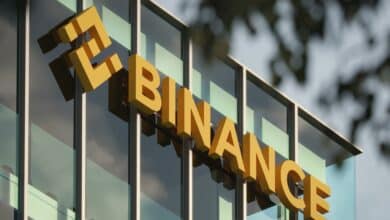Everything You Need To Know About the Ethereum Merge Upgrade

On the mainnet of Ethereum, the Proof of Stake consensus algorithm will shortly take the role of Proof of Work. The upgrade is referred to as “The Merge” upgrade and is scheduled to launch sometime soon. This change will make Ethereum more energy-efficient and would likely improve the network’s stability and security.
Along with The Merge, other notable Ethereum network upgrades include The Surge, The Purge, The Verge, and The Splurge. This will allow the network to handle more transactions and provide a better experience for users. Both Ethereum’s throughput and energy efficiency are being improved through the aforementioned upgrades.
The Merge, a planned event that would combine the Ethereum mainnet and the Proof of Stake Beacon Chain, is predicted to take place in September 2022. Ethereum has proven to be a popular platform for hosting decentralized projects. Its popularity has led to it becoming a well-liked choice for decentralized applications.
On the list of platforms utilized by developers, Ethereum is one of the most well-liked for creating decentralized applications. Because of its popularity, developers that wish to construct decentralized applications frequently choose Ethereum.
Its use in the blockchain sector has increased dramatically as a result. This popularity has resulted in Ethereum becoming a common choice for developers who want to create their own projects using blockchain technology. The Ethereum road infrastructure is not able to support common operations to keep up with the growing global demand despite still being one of the most famous blockchains.
There are some limitations to the Ethereum blockchain that are hindering its ability to scale. The team behind the Ethereum network has suggested some modifications to the Ethereum blockchain that will improve its scalability. These modifications will make Ethereum more capable of accommodating the growing demand for its services. These upgrades would allow the Ethereum network to handle more transactions and more users.
There are a number of enhancements including The Beacon Chain, The Surge, The Merge, The Purge, The Verge, and The Splurge. One of the major and most daring changes to the blockchain space ever will result from the Proof-of-Stake consensus protocol fast replacing the existing standard in Ethereum blockchain governance.
Factors driving the Merge’s origin and growth
After its July 2015 introduction, Ethereum quickly rose to prominence as one of the most widely used cryptocurrencies. Over the past couple of years, Ethereum has been specified as the most significant digital currency around the world. The Ethereum network typically supports a Proof-of-Work consensus approach to encrypting the blockchain, similar to what the Bitcoin network does.
Proof-of-Work (PoW) consensus is a security model in which nodes must validate and timestamp transactions before adding them to the blockchain. Nodes with more PoW blocks become more reputable and are given more influence in the network. This method requires miners to solve complex mathematical problems to validate transactions and blocks on the network.
In order to verify transactions and obtain rewards in ETH, cryptocurrency miners must run devices that analyze data. Due to the fact that it is largely governed by a small number of more advanced, complex mining activities, it is extremely energy-intensive to operate.
The Merge is a major update to Ethereum that is expected to bring many new features and improvements. Many people are excited about it, and it is already being called one of the most important updates to Ethereum ever.
The Merge is anticipated to significantly strengthen the Ethereum chain and introduce a number of new features and platform enhancements. It is planned to be released in September 2022 and is anticipated to increase the reliability and functionality of the Ethereum network.
Proof-of-Stake is a step forward for the Ethereum network, which has been working slowly and ineffectively for years. This switch will finally bring the network up to date and improve its performance. This most recent chain will be safeguarded by a handful of validators, and they will be compensated for their services.
These are teams of individuals who invested in Ethereum in order to earn ETH payouts. Their engagement in the system and their activity support decentralization and resilience.
Ethereum is enhancing its blockchain platform to render it safer and more effective. The network’s capacity to process more transactions and deploy new apps will be improved by this upgrade, termed Ethereum 2.0.
What spurs Ethereum’s upgrade?
Decentralization is a key component of blockchain design because it allows for greater trust and transparency. Instead of relying on a centralized authority, blockchain technology makes it easy for everyone to participate. This system allows for more democratic decision-making and openness, which is good for everyone involved.
Decentralized blockchains offer many advantages over traditional, centralized systems. They are immune to the risks posed by centralized control, are secure due to their ability to withstand individual failures, and are more democratic because anyone can utilize them.
As blockchains become more and more popular, networks need to make absolutely sure that can satisfy the demand for transaction managerial skills, also referred to as scalability demands. Unless this is implemented, the network can get overburdened when the quantity of outstanding transactions surpasses the blockchain’s limit. Increased trading fees are frequently the outcome of this.
Rising trading fees are frequently a consequence of increased transactional volume, which may be brought on by a variety of variables such as an increase in network usage, an increase in the volume of transactions being performed, or a reduction in the number of network nodes. It can be difficult to attain sustainability and anonymity with blockchains due to their desire to preserve their decentralized design.
The scalability trilemma explains why blockchain technology can’t handle too many transactions at once. The scalability, confidentiality, and decentralization benefits of blockchain technology have the potential to be enormous, but these benefits need to be tempered to ensure successful deployment.
Conceded by Vitalik Buterin, the Proof of Work consensus protocol employed by the present Ethereum network hinders it from becoming scalable.
It can be more difficult to scale a Proof of Work network than a Proof of Stake network due to a variety of reasonings. First of all, only a specific range of transactions can be validated by every block. A steady rate of block mining is desired as the second requirement.
The network must also be verified and maintained, which takes a lot of resources. Another reason is that it is challenging to build a consensus around the network’s transactions.
Blocks for Bitcoin, for instance, are anticipated to be mined after ten mins because the mining process varies significantly depending on the network. Many people find bitcoin to be a fast and affordable way to make transactions, but this can lead to problems because it can take longer and cost more to process transactions.
Because of its secure design, Bitcoin can withstand high demand, but when that demand is large, its block period and maximum volume of transactions every block may cause capacity issues. Processing costs and acceptance timeframes frequently increase considerably as a result of this.
In an attempt to solve some of the issues with proof-of-work systems, the Ethereum team has recommended a number of changes to the protocol of Ethereum designated as Ethereum 2.0. These improvements are sure to make Ethereum the perfect platform for a wide range of applications.
One of these modifications is a new technique called proof-of-stake (PoS), which would offer more robust and decentralized networks based on the blockchain system, significantly faster times for transactions, and other features.
The extensive scope of the Ethereum upgrade
The Ethereum 2.0 upgrades are making waves across the blockchain community, with The Beacon Chain, The Merge, The Verge, The Surge, The Splurge, and The Purge all playing integral roles. The Ethereum network is undergoing advancements that should increase its stability, longevity, and integrity. The Ethereum network will stay decentralized once these changes are finished.
The Beacon Chain
The Beacon Chain is a new development that builds on the strengths of Ethereum, making it an even better platform. It implemented Proof of Stake and was made available on the Ethereum platform in December 2020. You can either stake ETH to participate in the Beacon Chain or utilize a consensus method to make sure the network is secure. At the moment, it coexists with the Ethereum mainnet.
The Merge
Ethereum is making a big move to address scalability challenges – with The Merge. This is a powerful development that will make Ethereum even more powerful and useful. More users will be able to utilize Ethereum as a result of the network being faster and more effective. This new solution will bring together the two existing chains in the ecosystem of Ethereum, unifying the two different ways that transactions are processed.
The Beacon Chain-run Proof of Stake network and Ethereum will converge in September 2022. The Ethereum network and its users will experience a significant improvement as a result. When The Merge will be done, a Proof of Stake strategy will be used to offer Ethereum’s safe network. By depending on the credibility of users who own Ethereum tokens, this strategy will protect the network.
Consensus mechanism
Proof of Stake is a much more efficient way of ensuring consensus and will be in place long after Ethereum’s planned Merge. It will be possible for the network to expand even further by implementing this upgrade, which will increase its safety and reliability. Nodes designated as validators, as opposed to miners, will be the ones who create blocks.
To ensure that blocks are legitimate, a node is randomly selected every now and then to verify their validity. To help with this, the validators are invited to offer suggestions for transaction fees and staking dividends.
PoS systems utilize less resources than PoW systems since there is no rivalry to generate additional blocks, rendering them economically affordable. Additionally, since PoS doesn’t require miners to invest in expensive hardware, it can be more accessible to a wider range of users.
The Beacon chain mainnet transactions
The Beacon Chain is only monitoring a fraction of the transactions that have occurred. The network is expedited and trustworthy transactions are ensured by doing this. With its continued development, The Beacon Chain is expected to gain popularity in the future. As the network expands, this figure is probably going to rise.
Once The Merge is done, the primary venue for transactions on the execution layer, holdings, and liabilities will be The Beacon Chain. This will make it possible for everyone to cooperate in creating a better future.
Tokens
The Beacon Chain and the Ethereum blockchain will be combined, however Ether, the native currency of Ethereum, will not change. By doing this, users will be able to utilize Ethereum just as they always have while gaining access to the Beacon Chain’s security and dependability. This will allow users to continue to use Ethereum’s decentralized platform and smart contracts.
You need not take any additional preparation measures because your funds of ETH will be available once The Merge is done. The current mining and staking rewards distribution model generates approximately 13,000 tokens of ETH each day.
After the implementation of The Merge, Ethereum will only issue a small amount of new ETH tokens each day as a reward for staking. This will reduce the amount of ETH available for issuance, making it more difficult for new ETH to be created.
What else is out there besides The Merge upgrade?
There is no confirmed timeline for any other upgrades on Ethereum, but The Verge, The Splurge, The Surge, The Purge, and even Sharding are all underway and are planned to happen at some point next year.
What is Sharding?
Ethereum is planning to increase its scalability by implementing sharding, which will allow for increased throughput. This may reduce transaction costs and time. The potential for reducing costs for transactions and time through the use of a sharding technology is considerable. This would allow for a more efficient and transparent system, which could benefit both businesses and consumers.
Sharding is a way of dividing a blockchain into smaller pieces so that it can be more easily managed and accessed. This is similar to the way that traditional blockchains are divided into different sections, but with sharding, each shard chain only exhibits a small part of the data on the blockchain.
Shard chains provide an efficient way of verifying transactions, all due to the particular part of data that they include. Sharding is a complex arrangement that demands a ton of duration and energy to carry out. It is not always feasible or practical to do so, especially in large organizations.
While blockchain has the potential to revolutionize many industries, its potential scalability win could be its biggest yet. On the off chance that it is performed well, Ethereum could be better able to access and store information, making it a powerful tool for businesses.
The Sharding strategy will involve multiple phases, with variants 1 and 2 of the network’s shard chains providing more info and allowing code to be executed respectively. There is still much debate about which upgrades to Ethereum should be made, but nothing is guaranteed yet.
Vitalik Buterin said on Twitter that upgrades such as the ones mentioned above should not be taken as “stages,” since these are the upgrades that are going to line up with The Merge. He said that these upgrades are “parallel upgrades” that will improve Ethereum’s functionality and scalability.
Impact of The Merge upgrade on the native currency of Ethereum (ETH)
The Merge is going to have a big impact on Ethereum, both in terms of its own development and its potential implications for the wider blockchain space. It will give Ethereum a much-needed boost and will open up many new possibilities for the future of the platform. Ethereum is a well-known and highly respected blockchain project of its second generation. Initially, the supply of ETH was generous, ensuring that there will be ample supply for everyone.
This provides developers and entrepreneurs with a powerful platform to build on and ensures that Ethereum remains the leading choice for decentralized applications. With its unique Proof-of-work model, a huge level of the supply of ETH tokens is utilized to reward miners for the security of the network.
This change will benefit the network as a whole, and holders of PoS coins will benefit the most. After switching to PoS, incentives for mining will cease to be issued. This will result in the number of ETH tokens issued each year will be lower by about 90%. This is due to the fact that a greater percentage of the remaining supply will be allocated to the frozen funds.
In the event that the law of demand and supply is working the way it’s supposed to, this may lead to an increase in the ETH price. However, despite the unpredictability of monetary business sectors, there are numerous other variables that can influence prices. This makes prediction difficult, and as a result, prices can vary greatly from day to day.
Conclusion
Ethereum is planning on upgrading its network in a way that will allow for more transactions to be processed in a given amount of time. This upgrade, commonly termed the “Merge,” is expected to improve the network’s performance and make it easier for developers to create and deploy new applications.
Tokenhell produces content exposure for over 5,000 crypto companies and you can be one of them too! Contact at info@tokenhell.com if you have any questions. Cryptocurrencies are highly volatile, conduct your own research before making any investment decisions. Some of the posts on this website are guest posts or paid posts that are not written by Tokenhell authors (namely Crypto Cable , Sponsored Articles and Press Release content) and the views expressed in these types of posts do not reflect the views of this website. Tokenhell is not responsible for the content, accuracy, quality, advertising, products or any other content or banners (ad space) posted on the site. Read full terms and conditions / disclaimer.







